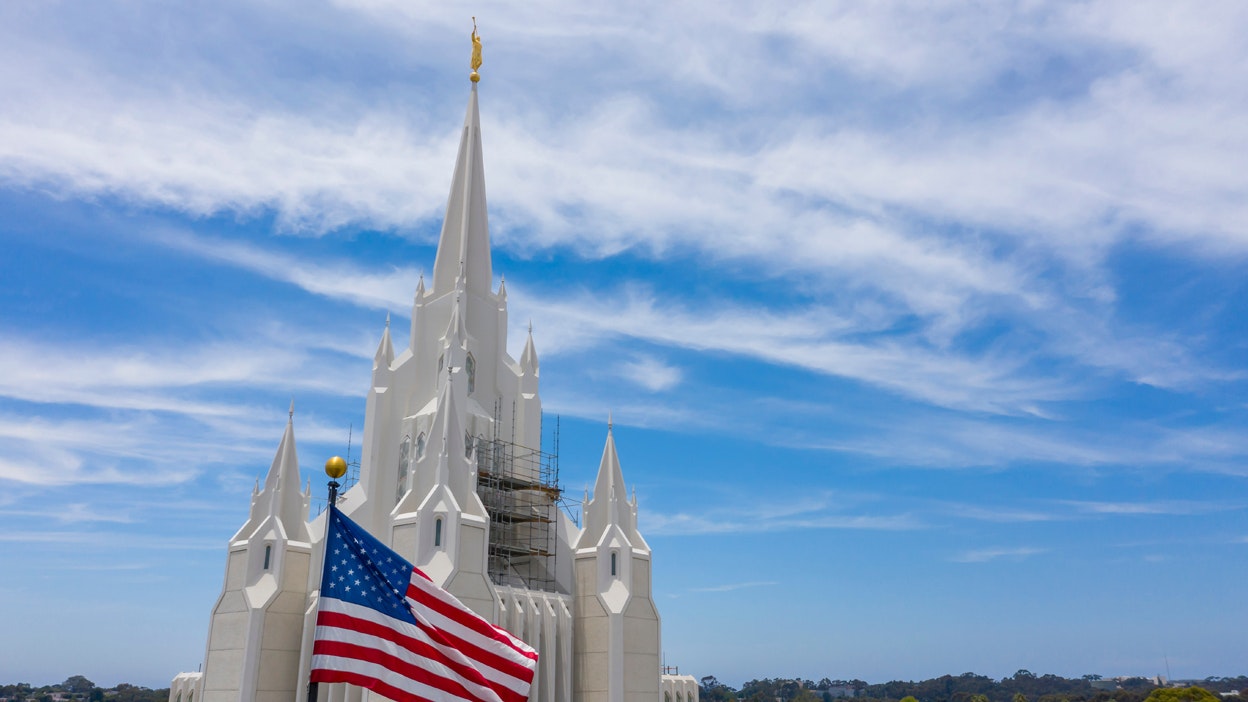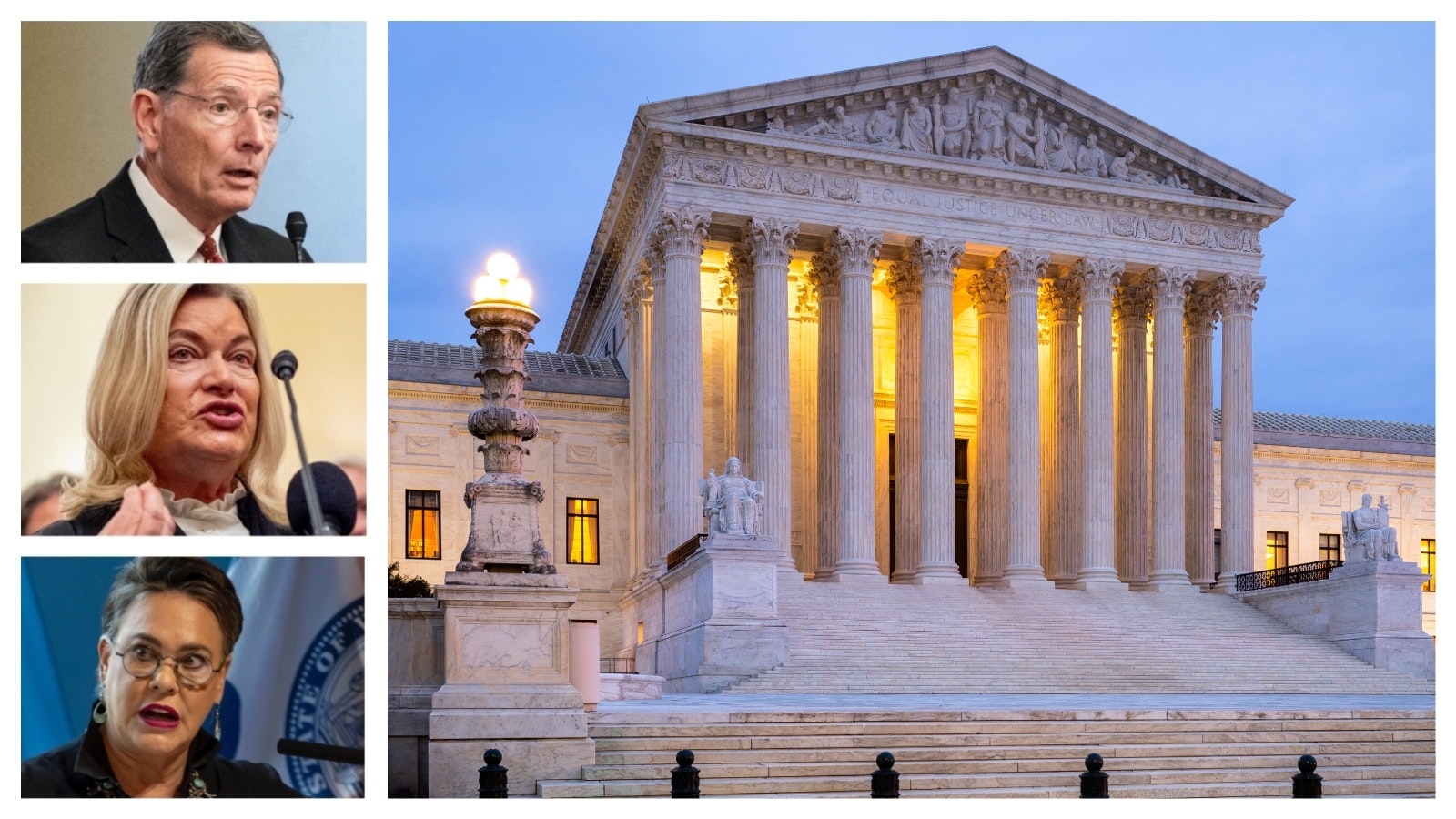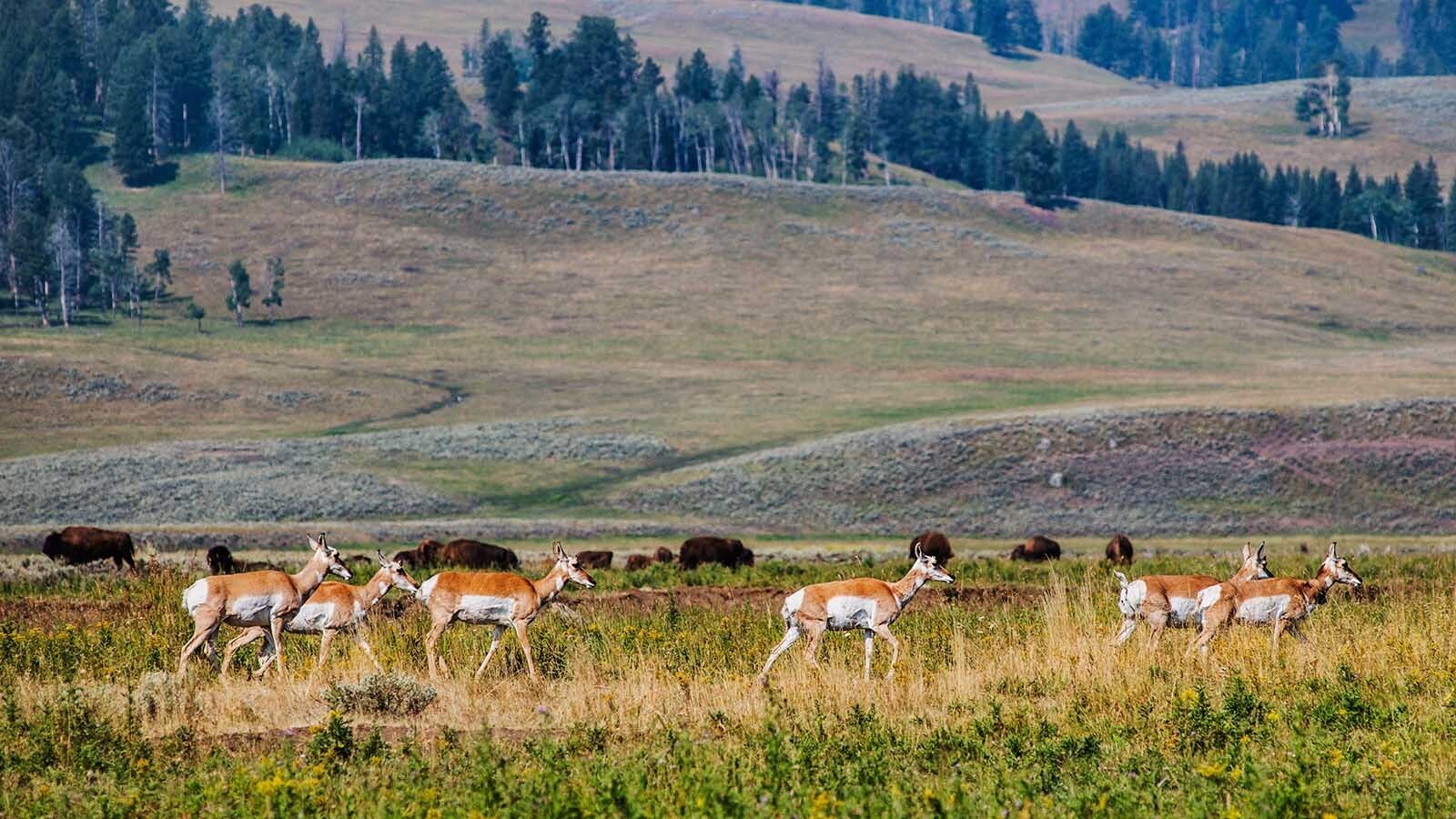Months of community debate, arguments and politicking came to a head this week when the Cody Planning and Zoning Board gave the green light to build a proposed Church of Jesus Christ of Latter-day Saints temple in the city.
Whether the facility can have its 77-foot steeple, however, is still undetermined.
When the board met Thursday, it approved the church's plans to build a temple in a Cody neighborhood, but delayed making a ruling on the building’s most controversial feature — a 77-foot steeple rising from the main roof of the temple.
The board approved the conditional use permit application necessary to give basic approval to build the temple and an ancillary building.
More than 300 people crammed into Cody Auditorium, most making final pleas to deny the plan over concerns about the temple’s height and that it would cause light pollution from being illuminated.
Height Exemption Delayed
Haskell Architecture & Engineering Inc., the architectural firm representing the church, had submitted a special exemption application to exceed the 30-foot height in the area temple is slated for, which is zoned rural residential.
Board member Matt Moss made a motion to approve the special exemption for the steeple, but it wasn’t seconded by any of his fellow board members. He then made a motion to table consideration to a future meeting where more board members would be in attendance. Two of the board’s seven members were absent.
Moss’ second motion passed 4-1.
Rowley said the proposed temple has consumed most of his non-working hours over the last several weeks.
Cody City Planner Todd Stowell said he believes the temple complies with every goal of the city’s master plan.
The biggest contention over the temple is its height, amplified by a 77-foot steeple that tops the building out at 101 feet overall. Stowell determined the steeple shouldn’t be counted against building height rules because it technically isn’t part of its roof.

A Tall Order
Stowell said the building should actually be considered 25 or 26 feet tall, which falls under the city’s 30-foot maximum height limit for new construction in the rural residential zone it’s planned for.
Supporters of the project and Stowell noted that the steeple won’t be occupied by people and is open to the air on its sides, but is hooked up to electricity and provides lighting inside it.
Debra Wendtland, an attorney representing a 21-resident group called “Preserve Our Cody Neighborhoods” that opposes the proposed temple location, sent a letter to the Planning and Zoning Board the day before the meeting describing Stowell’s interpretation of city’s height ordinances as incorrect and “tortured.”
Of Cody’s 24 city churches, only two are taller than 30 feet, resident Terry Skinner said. One is located in a business district and the other in a much denser residential area than the proposed temple.
Kendal Hoopes, a Sheridan-based attorney representing the church, said if the city code had intended to include church steeples in determining a building’s maximum height, it would say so.
Jeremy Bastow, the principal architect on the project, said the cities of Cheyenne, Rock Springs and Sheridan all have height exemptions for spires and steeples in their building codes.
Let There Be Light
Some opponents of the temple also expressed concern about the light that would emanate from it.
Stowell also pointed out that the lighting at Cody’s softball fields, which are located in the same zoning district as the proposed temple, as a point of comparison. Unlike the stadium lighting, Bastow argued the Church’s lighting will not emanate outward.
He also said the steeple is located 405 feet from the nearest house, eliminating any safety hazards. The temple would have a 270-foot setback from the nearest property.
Stowell said he believes the church had minimized lighting impacts of the steeple and that neighboring views are not part of his considerations on the project.
Board member Kim Borer asked if there could be anything done to “Westernize” the mostly cream-colored temple.
Bastow said he did an internet search for the architectural style of Cody, which returned “fake facade Western.”
“That is the architectural style for fake facade Western,” he said. “If that’s the desire for the city of Cody to be the style of all their buildings, then that can be put in the code and directed to do so.”
Bastow also said the temple does have characteristics built in that are emblematic of the town’s culture.

Opponents
There were more opponents than supporters who spoke at Thursday’s meeting.
Carla Egelhoff said her opposition to the project is based around one core issue. If not for this, she believes the temple would be easily approved, as was a Church of Jesus Christ of Latter-day Saints temple in Casper.
“The site location is not appropriate — simple,” she said.
Dan Haman echoed the sentiment.
“We’re not against the temple, we just wish it was in a more appropriate location,” he said.
Dan Brauser said the temple is the most divisive issue Cody has ever faced and it would be a “100-foot billboard advertising Mormonism that us gentiles would have to view day after day.”
Gloria Hedderman said the temple would be a blot on the Cody skyline that would take away from the heritage Buffalo Bill founded the city on.
“Cities are branded by their towers — the Eiffel Tower in Paris, the Arch in St. Louis, the Golden Gate Bridge in San Francisco. Do we want to be branded with this too-tall a structure?” Hedderman questioned. “I don’t think so. We’re Buffalo Bill’s hometown.”
Supporters
Most of the people who testified on behalf of the temple Thursday are members of the church.
“Personal preferences of a few … do not trump the law or do not change your code,” Hoopes said.
Cody resident Ryan Beardal said the temple will attract “good” LDS families to the community and improve it.
“I believe the benefits of the temple outweigh any negative effect,” he said.
Andy Jacobsen, president of the church’s local stake, presented a petition signed by about 1,500 people supporting the temple project. There are about 8,300 members of the church in the Big Horn Basin.
“Regardless of the outcome of the decision today, we want to continue to be your friends and neighbors,” Jacobsen said.
A few supporting the temple and Hoopes mentioned the land use provisions of the Religious Land Use and Institutionalized Persons Act of 2000, which protects people, houses of worship and other religious institutions from discrimination in zoning and landmarking laws.
“That law is intended for these types of reasons,” Hoopes said.
Others mentioned how the land would likely eventually become a subdivision the temple isn’t built there.
Former Cody City Council member Glenn Nielson, who donated the land for the temple, spoke in favor of the project and mentioned the contributions his grandfather, Glenn William Nielson, the founder of Husky Oil, made to the Cody community.
“We feel to keep that legacy alive and consider this site to be a donation to the entire Basin area,” he said.
The 9,950-square-foot temple would sit on a 4.69-acre parcel of land overlooking the town in city limits. Although the property is now used for grazing, the neighborhood surrounding is mostly mixed residential with some rural and agricultural elements.
Conflict Of Interest?
Cody City Attorney Scott Kolpitcke began the meeting by addressing requests that members of the church who sit on the Planning and Zoning Board recuse themselves from voting on the temple approval. Similar requests were made for Stowell, a member of the church.
Stowell said he received several personal attacks over his input on the church. He stressed to the audience that every decision made in his recommendation also took input from the city’s administrator, public works director and Kolpitcke.
Kolpitcke said church membership is not grounds for recusal under Wyoming law.
“That’s not a conflict,” he said.
Pat Pitet agreed with that analysis but said city officials should go above and beyond to avoid perceptions of conflict and can always recuse themselves from an issue if they feel it necessary.
“I think there’s a lot of appearances of impropriety in this situation,” he said.
Wyoming law is relatively narrow on the topic of conflicts of interest, limited to whether someone has a direct financial interest or personal benefit to what they are ruling on.
Leo Wolfson can be reached at leo@cowboystatedaily.com.





